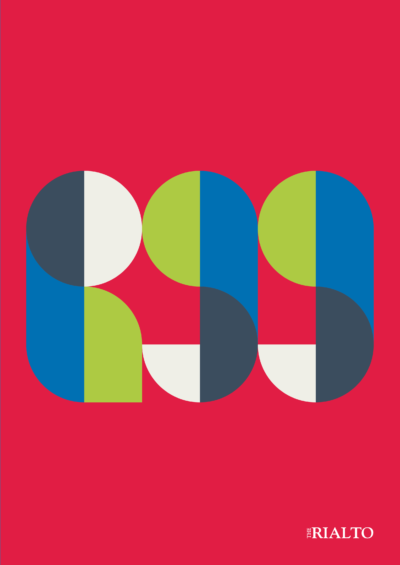Here is one of my favourite poems from the current issue (No. 90), of the magazine.
CATFORD CYCLING CLUB RACE THROUGH ASHDOWN FOREST
The normal fawn-coloured morning
is scored through with a fast-moving
artery of red
the jerseys of young
bearded men on a mission to sinew
a hipster oil-slick of black lycra’d thighs
flick-flacking
through the Sussex countryside
free-wheeling down
Jib Jacks Hill to Duddleswell
swarming wide then thin from six-abreast to one
backs rounded numbered bingo balls
chests bright as a worm of robins
arses as black
as the black-faced Forest sheep.
Jill Munro
Ann and I were on holiday in France at the end of July, staying down near Bordeaux, and there happened to be a television on which I could watch the day’s highlights of the Tour de France (quietly sophisticated broadcasting by ITV). A very complicated spectacle, involving large numbers of cars and motorcycles surrounding and chasing along with the cyclists pedalling up and down hills at great speed, competing for positional advantages measured in seconds. Anyway it reminded of this delicious poem by Jill Munro.
Some readers find this open style of poetry disconcerting, and it was overused in the 1960s by poets stridently claiming to be breaking with the past. But handled well, as here, it works. In cycle racing there is the constant movement forward of the peloton and the constant movement within the peloton, cyclists moving through the peloton or falling back, shielding one another or breaking free at the front. Formally the poem mimics this, with words bunching together and then stretching apart. Line 11 in particular illustrates this, with its ending, ‘to one’ so far from the beginning of the line as to be almost lost to sight (something I noticed happening as I watched the televised race). The poem is also full of words evoking motion, ‘swarming’, ‘free-wheeling’, ‘flick-flacking’, ‘fast-moving’, ‘scored through’.
This poem does a number of the things that I like to see in poetry. As well as finding a form that fits the content it has great concision; the title, for example, tells us exactly who the poem is about (it’s the Catford club – and by the way look how those five ‘Cs’ resemble the hooped backs of cyclists) and that they are racing, and they are in Ashdown Forest (precisely located, a large area of heathland and trees in Sussex, within cycling distance of the south London suburb of Catford) (famous as the location of A.A. Milne’s histories of a toy bear). Some of the trees are pines, which seems to me to add clarity to line 7’s ‘flick-flacking’. There are many roads in the Norfolk Brecks lined with Scots pine and if you stand to one side and watch traffic moving ‘flick-flacking’ is exactly what you see. Brilliant word choice, evoking both the zoetrope and those slightly grubby flick books we all had or craved after in the 1950s.
The sense of a precise place is also present in line 10, ‘Jib Jacks Hill to Duddeswell’. And here I want note another thing in the list of things I like to see in poetry, surprise. Unless you are a resident of either place I imagine the names are, as they are to me, a surprise. The poet is writing from a connected place, knowing the landscape. The reader is drawn in by the oddity of the names (as well as by the alliteration of the ‘Js’ and the repeated double ‘l’). English place names can be very expressive – remember Adlestrop.
Jill is good at surprise. There’s the first line with its ‘normal fawn coloured morning’. I don’t recall ever seeing a morning so described, but we have that neat juxtaposition with ‘normal’. Clever. And then there’s the description of the cyclists. They’re not just any group, they are a particularly cool lot, ‘young/bearded men on a mission to sinew/ a hipster oil-slick of black lycra’d thighs.’ (I met a colleague the other day who told me he’d joined a cycling club ‘for the exercise’ and because he liked wearing lycra: cyclists are Beau Brummell’s heirs). Coleridge said something about poetry being ‘the best words’: ‘hipster oil-slick’ fits that category for me – I don’t quite know what it means and at the same time I know exactly what it means. But the best surprise is line 11, ‘chests bright as a worm of robins’: its a line crying out to be stolen, I’d hug myself for delighted days if I’d written it. Not only do robins like to eat worms there’s the sinuous linkedupness of worms, segments moving together, there’s the famous cheerfulness of robins, there’s ‘chests’ not ‘breasts’ (‘robin redchest’, imagine!) and there’s the word ‘worm,’ which also signifies ‘dragon’. (Yet another suspension in the writing of this as I search youtube for Owen Branigan singing ‘The Lampton Worm’ sometime in the 60s). This is such emotionally and intellectually intelligent poetry.
My delight in this poem extends to the last lines ‘arses as black/ as the black faced forest sheep’. Poetry colleagues will know that I can be quite fierce about assonance and alliteration, conceitedly confident as I am that use of them doesn’t necessarily constitute poetry. But these lines work, possibly because the Emperor’s New Clothes child voice in me has always wanted to say something about the proximity in the peloton of faces to buttocks, definitely because the ‘ars’ ‘as’ ‘as’ and the ‘ack’ ‘ack’ ‘ace’ sounds work together. (The ack rhyme occurs five times in the fifteen lines). Also sheep-watchers will know that these animals, when they decide to go somewhere in a hurry, move very like the cyclists’ peloton. Also there’s ‘fawn’ in the first line and ‘sheep’ in the last line. And so on.
The second poem I want to write about is the first one in Matt Howard’s collection Gall (The Rialto, 2018, page 9).
A JAR OF MOLES
I have trawled the whole city for your gift,
trusted the knowledge of black cabs to bring you this –
it is quite full, so be careful of its weight.
The man couldn’t say how many it contains,
simply that it’s full because it has to be,
just as a true heart only ever brims with love.
Each side is crammed with quiet wild faces,
pink snouts clear from their maze of dark chambers;
see, this one here still bares its teeth.
The labouring velvet behind blown glass through decades
and where one man made that emptiness
another has worked hard to fill it.
So take these moles darling, with my love,
hold them safe, and away from the sun,
cherish each heavy earth-swimming hand.
Matt Howard
I first came cross this poem at the Aldeburgh Poetry Festival. Matt was one of the poets chosen to take part in the Sunday morning poetry Masterclass, an event that The Rialto gladly sponsored on and off for many years (latterly I suggested they change the name of the event but no one came up with a politic improvement). The audience were handed printed sheets with the poems to be read and worked on. This poem struck me with astonishment, and it still does, a definite WTF moment. An extraordinary title and my heart was in my mouth for the poet as I thought that here might be a poem about to go horribly wrong. But it doesn’t: what we have is a sure footed and accomplished love poem, a Gothic romance maybe but a brilliantly worked thing.
The title
Of all the unlikely things to find in a jar it’s hard to think of anything odder. But then you have to remember that ‘jar’ has other meanings. Google comes up with
‘to have a harsh or unpleasant effect on someone or something: to hit or shake (something) forcefully: to make (someone) feel uneasy’. (Merriam- Webster)
I’d suggest this is very relevant to the poem. Also, literally, a jar is a container, and this too is very relevant – a poem is a structure to contain. My memory digs up from the 60s Cleanth Brooks and The Well Wrought Urn.
First stanza
The previous poem has fifteen lines openly organised to convey movement: this poem’s fifteen lines are closely organised in tercets, a form which gives a number of options, one of which, as here, is a self contained beginning, middle and end. (Another option would be a couplet which uses the third line as a link to the next tercet, etc.).
One (of the many) things I like about this poem is its breath (I was going to say breadth), the pace of it. Listen to the wide vowels of the first line ‘have’, ‘trawled’, ‘whole’, ‘your’. They slow your eye/voice down. Particularly with the ‘w’s and ‘l’s of ‘trawled’ and ‘whole’ which link to the same consonants in ‘knowledge’ in the next line.
So, ‘trawled’ is an interesting choice. It not only sets the pace of the poem, it has implications of content and procedure. I know that with modern methods the fishing industry has a good idea of what the content of the trawl will be, but the word has not lost its older sense of surprise, of never knowing what will be in the net when you haul it up – an Orford Merman? a bottle with a message? a coelacanth? Clearly the narrator didn’t set out to find a jar of moles. Or did he? ‘trusting the knowledge’. You can’t, by the way, become an official London black cab driver until you have demonstrated that you have ‘the knowledge’, an interior map of everywhere in the city and how to arrive there.
A complete poem
Another of the things I like about this poem is the skill with which it’s been tied together: ‘trawled’ is the third word in the poem, the penultimate word is ‘swimming’, in the second line there’s ‘black cabs’ and in line eight ‘dark chambers’, in line three there’s ‘full’ which is repeated in line five and reinforced in line 12 with ‘fill’. And there are other words that express fullness, ‘brims’ and ‘crammed’. And ‘careful’ in line three ties to ‘safe’ in the penultimate line. And ‘with love’ in line three ties with ‘with my love’ in line 13.
There’s no difficulty involved in reading the poem; it is syntactically orthodox, the word choices are apt and admirably clear – you don’t need to resort to Google (or your dictionary) for definitions. There are genius phrases, ‘quiet wild faces’, ‘maze of dark chambers’, ‘heavy earth-swimming hand’. (By the way if you suspect ‘hand’ as anthropomorphic, go look at a mole). But the more I read it, the more sure I am of its complexity.
The key (or a key) to the poem has to be these two lines in the second stanza (poet’s italics)
simply that it’s full because it has to be,
just as a true heart only ever brims with love.
Two assertions, the first is very matter of fact, the second takes wing and becomes, in the context of a poem ostensibly about a jar of dead creatures, astonishing. Poetry does this, I think it’s part of ‘poetic licence’: it trundles along and then makes seemingly incontrovertible assertions (‘My true love hath my heart and I have his’)(‘Beauty is truth, truth beauty’) the logic of which we take as truth as we read them. ‘A true heart only ever brims with love’, must surely be so, though I didn’t know it, had never thought it before – personally being more drawn to the notion of love flowing and overflowing. But yes, ‘brims’ has a modest stoicism to it, a status of readiness and fullness that is immensely likeable – lovable in fact.
Stanza three
Returns ostensibly to the accurate description of the jar and contents, but look at the line endings, ‘wild faces’, ‘dark chambers’, ‘its teeth’, and put them into relationship with the italicised previous line. Containment yes, possibly only just though.
Fourth stanza
Again in the first line of the stanza Matt uses open vowels to slow the poem’s pace – ‘labouring’, ‘blown’. ‘Velvet’ reminds me of the ancient Jacobite toast, ‘To the velvet gentleman’, the mole who dug the hole that tripped the horse that threw king William III and caused his death. Possibly irrelevant to a reading of the poem. What is relevant to Matt is the attention in this stanza to work. Matt values physical labour; there’s a vital section in Gall called ‘Blackwater Carr’ where he describes working to clear a piece of neglected land. I commend it to you. One of the poems in the section, ‘Crome’, has been chosen by Mark Cocker as a preface to his new, important, book, Our Place. Anyway, this stanza balances the preceding one, we have the moles and then we have the what and how of what the humans have done with them. I think the stanza is also a comment on relationship and on the process of writing a poem.
Final stanza
The last three lines return us to the start of the poem and to the presentation of the ‘gift’. And, by the by, the initial throwaway ‘So’ is cheeky, implying that the intervening lines have explained everything, whereas they’ve raised more questions than answers. But the three lines do tie the poem up, the gift is given, with further instructions for its care. The moles, in death, need to be kept out of the sun, much as they stayed in the dark when they lived. (And maybe much as we are in the dark about the characters of the narrator and the beloved?) We are also reminded that the giver is expressing ‘love’. The word ‘heavy’ in the final line ties in with ‘weight’ in the third line of the first tercet. The physicality of the moles is again emphasised with the brilliant image of their being equipped to swim through the earth.
Conclusion
I found this a very satisfying poem to read; it’s skilfully written, it weaves together clarities and obscurities, and it gives me a new way of thinking about love. I also found, writing about both poems, that I’d mislaid something of my love of poetry, the jump for joy of it, in the process of triage that has to take over when I’m reading for the magazine. Looking at these two poems has provided very salutary pleasure.
As I was ruminating on Matt’s poem the phrase ‘a box of sweets’ drifted into my mind, as somehow a parallel to this jar of moles. The internet helped me correct myself (‘of’ is of course ‘where’) and to remind me that the context is these four lines by George Herbert.
Sweet spring, full of sweet days and roses,
A box where sweets compacted lie;
My music shows ye have your closes,
And all must die.
The seventeenth century Metaphysical poets, who were considered weird and dark, until the twentieth century discovered they are marvellous, had two main themes ‘Momento Mori’ (be aware of your death) and ‘Carpe Diem’ (live all you can). Jill Munro’s cyclists are definitely joyfully seizing the day. Matt Howard combines both themes.
Michael Mackmin






